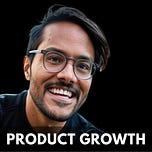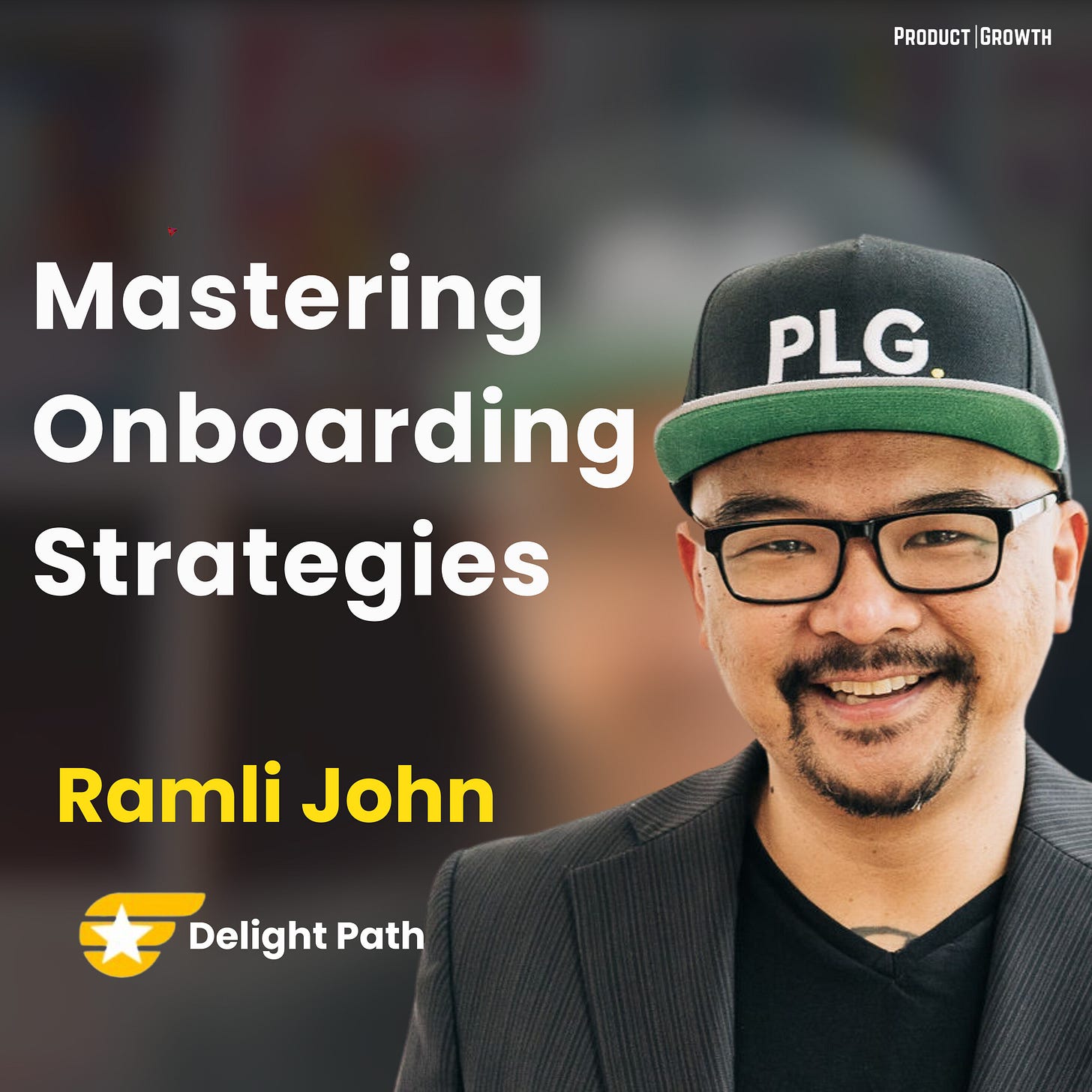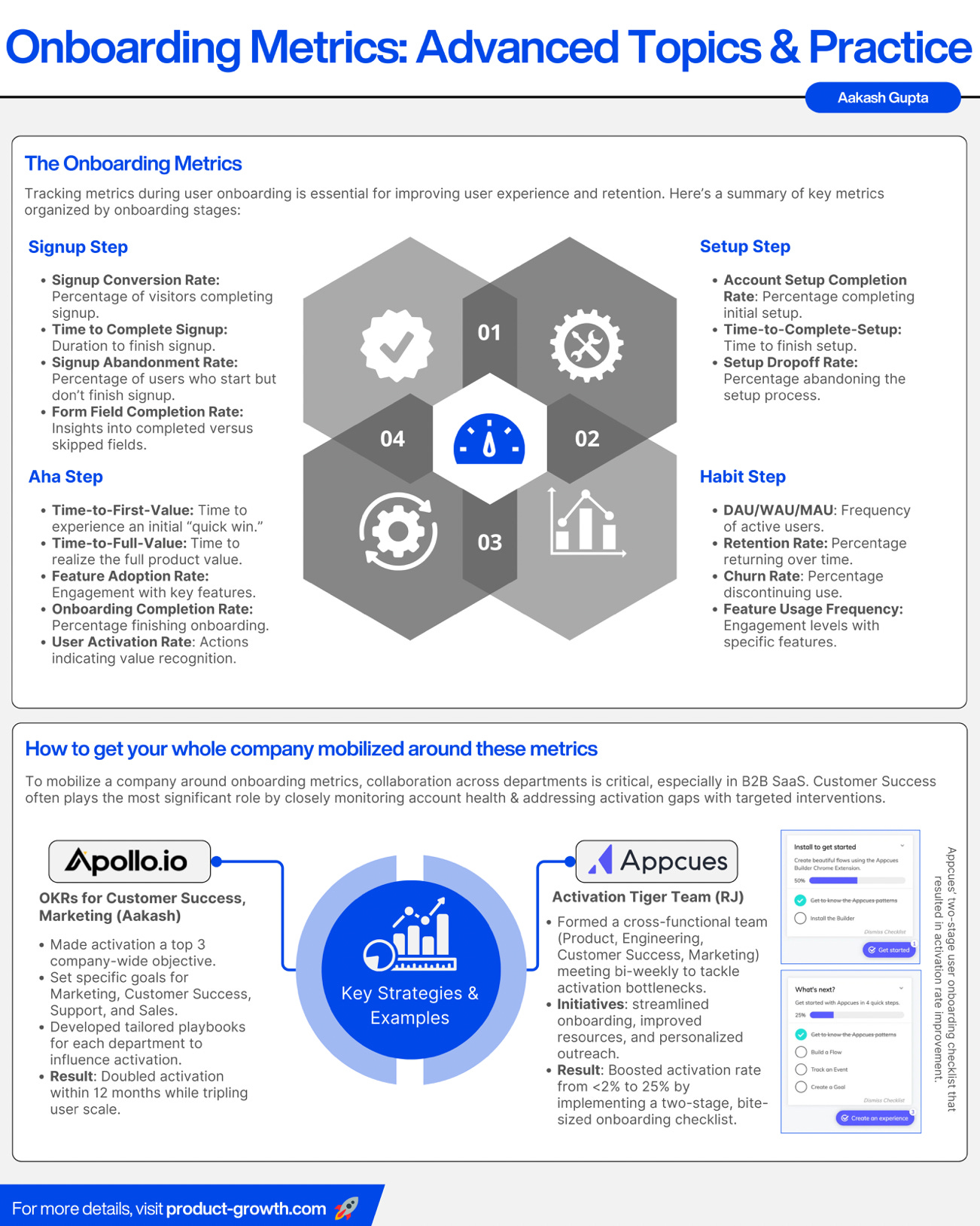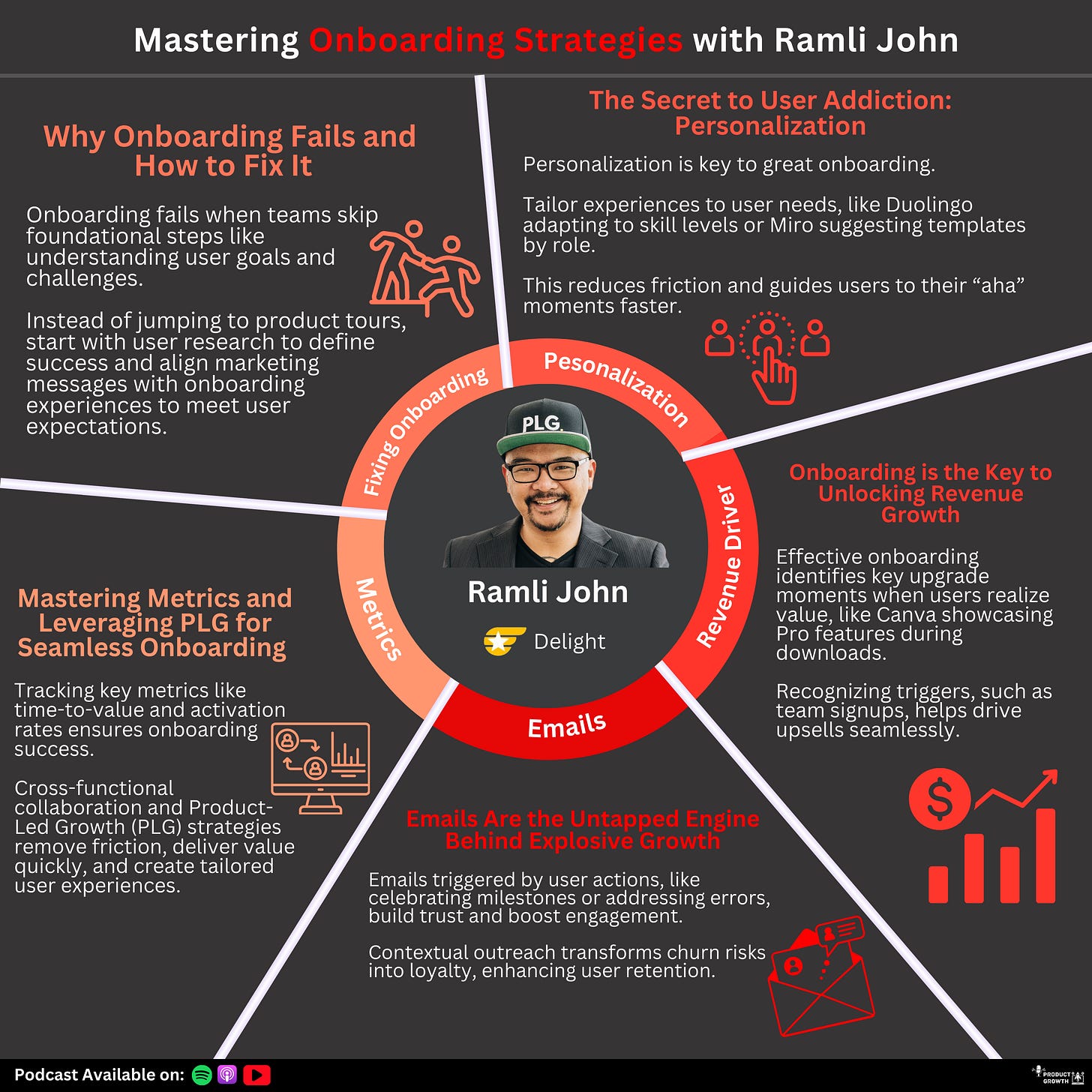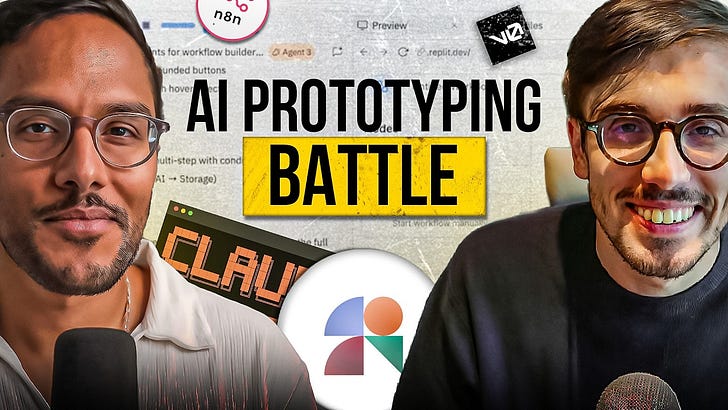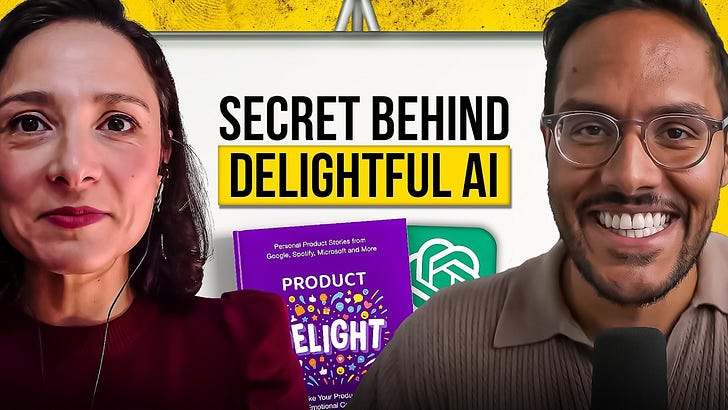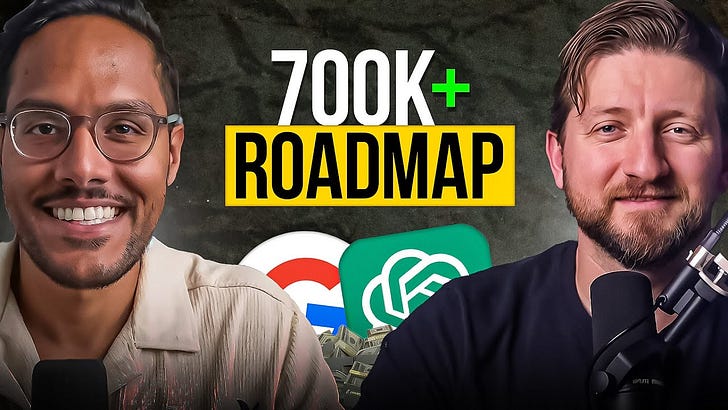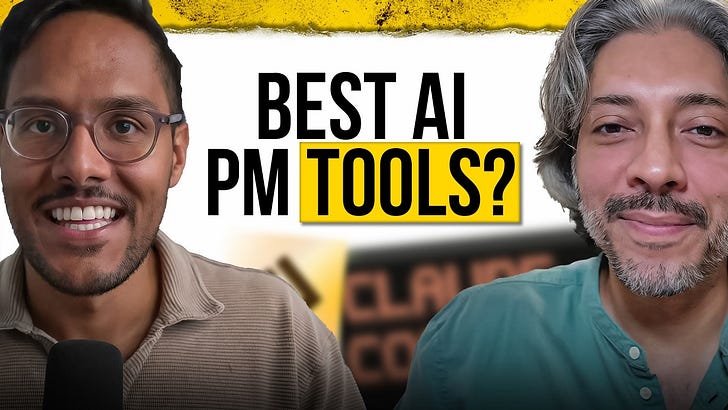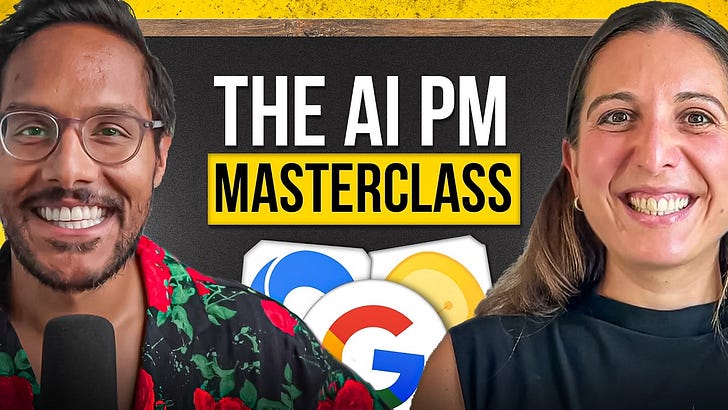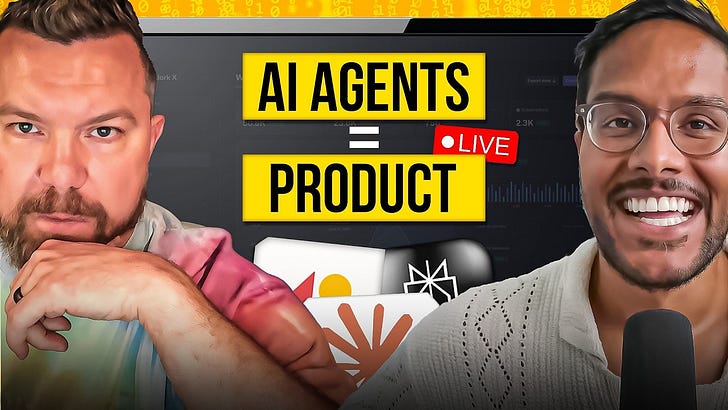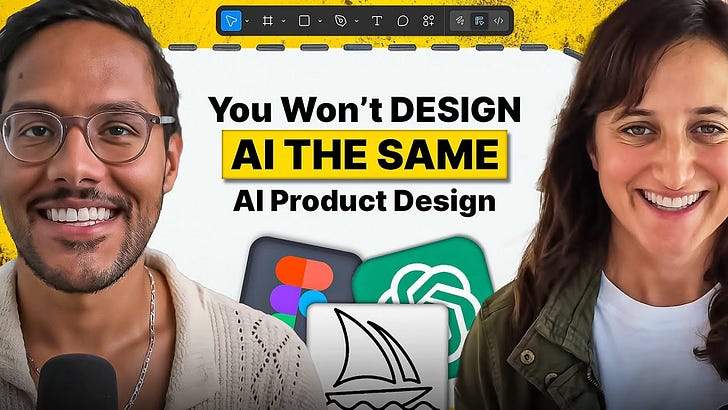Listen now on Apple, Spotify, and YouTube.
Brought to you by:
Zeda.io: Discovery platform to turn your VoC into product insights
Sprig: Build products for people not data points
SectaLabs: Professional headshots from regular selfies
40-60% of users abandon an app forever after signing in just once.
What if you could turn that around by creating an onboarding experience that delivers value quickly, boosts activation, and drives long-term retention?
In this episode, Ramli John dives deep into the biggest onboarding mistakes teams make and shares proven strategies to optimize the process — personalization, behavior-driven emails, outreach, and identifying key upgrade moments for monetization.
He also highlights lessons from CrossFit, Duolingo, and Miro on reducing friction, engaging users effectively, and tailoring onboarding experiences for SMBs, enterprises, product-led, and sales-led models.
If you want to reduce churn, improve retention, and create onboarding experiences that turn users into loyal fans, this episode is for you.
We cover:
Is This the Best Onboarding Technique You Haven’t Tried Yet? — 00:08:18
The Best Onboarding Emails That Actually Work — 00:33:10
Laid Off? Here’s the Job Advice You Need Now — 00:57:37
A Framework to Turn Free Users into Paying Customers — 01:08:28
Head of Growth Role: Should You Take It or Run? — 01:19:56
From 9-to-5 to Solopreneur — 01:35:55
Here are the Key Takeaways
Here are 5 insights from Ramli:
1. Why Onboarding Fails and How to Fix It
The biggest mistake teams make is skipping foundational steps in onboarding, like defining what user success looks like.
Instead of jumping straight to product tours, start by understanding user goals and challenges through research.
Think of onboarding as building a bridge — without knowing where users want to go, you risk leading them to the wrong destination.
The connection between marketing and product is critical here: align messaging to ensure the “promised land” promised in ads or websites matches the onboarding experience.
Key tips to avoid onboarding failure:
Use user research to identify key challenges and objections.
Build onboarding flows that address these pain points and guide users step-by-step toward their goals.
2. The Secret to User Addiction: Personalization
Great onboarding systems start with personalization.
Don’t treat all users the same — some need a walkthrough from the basics, while others want advanced tools right away.
He shares examples like Duolingo, which assesses skill levels before tailoring lessons, and Miro, which uses user roles to recommend templates.
Even CrossFit, with its personalized welcome and orientation, shows the power of adapting experiences to user needs.
These companies reduce friction and guide users to their “aha” moments faster.
Things to remember:
Onboarding isn’t one-size-fits-all.
Tailor flows to different user types (e.g., SMB vs. enterprise) and goals to maximize engagement.
3. Onboarding is the Key to Unlocking Revenue Growth
Your onboarding can make or break your revenue.
Identifying the right upgrade moments is key.
These are the points where users realize value and are ready to pay for additional features or a premium experience.
For example, Canva introduces its Pro features during the download process, offering value while users wait.
Similarly, identifying triggers like multiple users from the same company signing up can signal opportunities to drive upsells.
4. Emails Are the Untapped Engine Behind Explosive Growth
Behavior-driven communication is a game-changer.
He highlights Phantom Video’s email response when users remove the tool from a call.
These emails don’t just engage users.
They build trust and guide them to the next step.
For outreach, focus on high-fit, high-engagement users and using contextual data to provide value-driven touchpoints.
Here’s why it matters:
Reaching out after a user encounters an error or achieves success can transform potential churn into long-term loyalty.
Behavior-driven emails triggered by user actions, like milestone celebrations or follow-ups to errors are touchpoints that can boost user engagement and retention.
5. Mastering Metrics and Leveraging PLG for Seamless Onboarding
Key onboarding metrics like time-to-value, activation rates, and drop-off points are essential for understanding and improving user flows.
But without clear ownership of these metrics, teams often struggle to make meaningful progress.
Success comes from strong cross-functional collaboration, where product, marketing, engineering, and customer success align on shared goals.
While Product-Led Growth (PLG) is often associated with B2C companies, enterprise leaders like Salesforce have adopted PLG strategies to streamline their onboarding and deliver value faster.
Here’s what you need to do to make your onboarding intitutive:
Adopt product-led growth (PLG) principles.
Focus on removing friction and providing immediate value.
Make your onboarding personalized to specific users.
For more details, listen to the full episode now!
Referenced
Books
Product-Led Growth by Wes Bush — PLG training and strategies
Product-Led Onboarding by Ramli John — Focused on strategies to optimize onboarding and drive user success
Newsletters:
Product Growth — Diving into product growth, company case studies, and new tech trends. Three main pillars: Succeeding as a PM, Product Leadership, and Getting a PM Job.
Why We Buy — Decoding buyer psychology.
Lenny’s Newsletter — Advice column about building product, driving growth, and accelerating your career.
Principles/Frameworks:
Fitts’ Law (Too Many Options) — Reducing the number of choices during onboarding helps users make faster, more confident decisions
Treasure Hunt Framework — Guides users toward what they value most (the “treasure”)
Tools
Appcues — Used to create in-product tours and measure onboarding success
Clearbit — Enables data enrichment to identify high-value users or companies for targeted outreach
Customer.io — Allows behavior-driven email campaigns
Where to find Ramli
If you prefer to only get newsletter emails, unsubscribe from podcast emails here.
Up Next
We have some great podcasts coming from Ben Williams, Maria Chec, and Mona Gandhi. I’m so excited to share them with all of you.
In the newsletter, check out this week’s latest piece if you haven’t yet: Proactive Product Quality - How to Prevent Issues Before Users Even Notice
And look out for these pieces up next:
The Google PM Interview Guide
The Product Leader’s Ultimate Guide to Process Changes
The Product Growth 2024 Course Pack
I think you’re going to love what’s coming up,
Aakash

